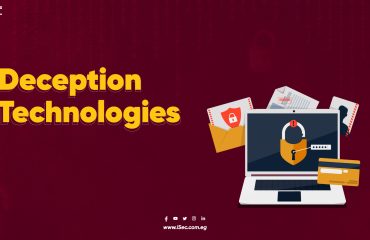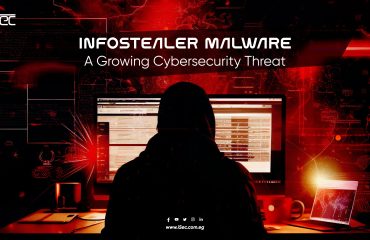
As one of the most critical infrastructures globally, the telecommunications industry plays a vital role in keeping people and businesses connected. From voice calls to data services, the telecom sector facilitates nearly all aspects of digital communication, making it a prime target for cyberattacks. With the rise of 5G, IoT (Internet of Things), and cloud-based services, the attack surface for telecom networks has significantly expanded. As a result, cybersecurity in telecommunications has become more crucial than ever to protect data, ensure uninterrupted service, and safeguard national security.
Why Cybersecurity is Essential in Telecommunications
The telecom sector handles massive amounts of sensitive data and supports a vast network of interconnected devices and services, providing attackers with many potential entry points. Telecom providers store customer data, billing information, and communication logs, all of which are valuable assets for cybercriminals. Additionally, telecom networks support critical services such as emergency response systems, government communications, and financial transactions, making them attractive targets for cyber espionage, data theft, and even nation-state attacks.
The following are some key drivers that make cybersecurity a priority in telecommunications:
- Data Privacy: Telecom providers handle vast amounts of personally identifiable information (PII) and other sensitive data, requiring robust measures to ensure privacy and data protection.
- Service Continuity: Telecommunications support essential services and critical infrastructure, where even minor disruptions can have widespread consequences.
- National Security: Telecom networks are often targeted by nation-state actors aiming to disrupt critical infrastructure, steal sensitive data, or conduct surveillance.
Key Cyber Threats in the Telecommunications Sector
Cyber threats in telecommunications are diverse and constantly evolving. Here are some of the most common cyber threats facing the telecom sector:
- Distributed Denial of Service (DDoS) Attacks
DDoS attacks overwhelm networks with massive amounts of traffic, rendering services inaccessible to legitimate users. For telecom providers, a DDoS attack can disrupt mobile networks, internet access, and other critical services, affecting millions of customers. Telecom providers are frequent DDoS targets due to the potential for widespread disruption and the critical nature of their services. - Advanced Persistent Threats (APTs)
Nation-state actors and organized cybercriminal groups frequently target telecom networks with APTs. These long-term, covert cyber operations aim to steal sensitive information, monitor communication channels, or disable critical infrastructure. APTs often use sophisticated techniques to remain undetected within a network, making them particularly challenging to detect and defend against. - Man-in-the-Middle (MitM) Attacks
In MitM attacks, attackers intercept and alter communication between two parties, allowing them to eavesdrop on conversations, steal data, or inject malicious code. In telecom, MitM attacks can compromise data integrity and privacy, affecting both businesses and individuals. - Supply Chain Attacks
Telecom providers rely heavily on third-party hardware and software vendors, which increases their exposure to supply chain vulnerabilities. Attackers often exploit weak links in the supply chain to infiltrate networks, as seen in incidents involving compromised telecom equipment and backdoors inserted by malicious actors. These attacks are challenging to detect and can have significant long-term impacts on network security. - SS7 and Diameter Vulnerabilities
The Signaling System No. 7 (SS7) and Diameter protocols, which are essential for routing calls and messages in mobile networks, are notoriously vulnerable to attack. Cybercriminals exploit SS7 vulnerabilities to intercept messages, track users, and even redirect calls. Diameter, the newer protocol used in 4G and 5G networks, also has vulnerabilities that attackers can exploit, putting user data at risk. - Ransomware and Malware
Ransomware and other forms of malware are increasingly targeting telecom companies. A successful ransomware attack can lock telecom providers out of their systems, disrupt service, and potentially expose sensitive customer data. Malware infections can also spread quickly across interconnected devices in telecom networks, posing a significant security risk.
Best Practices for Strengthening Cybersecurity in Telecommunications
To defend against these diverse threats, telecom providers must adopt a multi-layered cybersecurity approach that addresses both network security and data protection. Here are some essential practices for enhancing cybersecurity in the telecommunications sector:
- Implementing Network Segmentation
Network segmentation divides a network into smaller, isolated segments to limit the spread of attacks. By segregating sensitive data and critical systems from the public network, telecom providers can contain potential security breaches and reduce the risk of lateral movement within the network. - Continuous Monitoring and Threat Detection
Telecom providers should invest in Security Information and Event Management (SIEM) systems to continuously monitor network traffic and detect suspicious activity in real time. Machine learning and artificial intelligence can help identify anomalies and detect potential threats before they escalate. Continuous monitoring enables faster response times and minimizes the impact of cyberattacks. - Securing the Supply Chain
Ensuring that all third-party vendors and suppliers adhere to strict cybersecurity standards is essential for mitigating supply chain risks. Telecom providers should conduct regular security audits, assess vendors for compliance with industry standards, and require secure development practices to prevent supply chain attacks. - Upgrading and Patching Legacy Systems
Telecom networks often rely on outdated legacy systems, which can be difficult to secure. Providers should adopt a rigorous patch management policy to update systems regularly and address known vulnerabilities. Moving away from SS7 to more secure protocols can also help protect against signaling attacks. - Zero Trust Security Model
The Zero Trust model, which requires continuous verification of all users and devices, regardless of their location, is particularly effective for telecom networks. By implementing Zero Trust principles, telecom providers can enforce strict access controls and reduce the risk of unauthorized access. - Encryption and Secure Communication Protocols
Using encryption and secure protocols for data transmission is crucial in telecommunications. End-to-end encryption helps protect data from interception and unauthorized access, ensuring the confidentiality and integrity of communications. Telecom providers should prioritize secure protocols, such as TLS and IPSec, for transmitting sensitive information. - DDoS Protection
DDoS attacks can have a major impact on telecom services. Providers should implement DDoS protection measures, such as load balancing, traffic filtering, and rate limiting, to prevent attacks from overwhelming the network. Partnering with DDoS mitigation services can further enhance network resilience. - Employee Training and Awareness
Employees are often targeted through phishing and social engineering attacks. Regular training and awareness programs can help staff recognize and respond to potential threats, reducing the risk of human error. Employees should also be educated on best practices for handling sensitive data and avoiding security pitfalls.
The Role of Government and Regulation
Given the critical nature of telecom infrastructure, governments worldwide are implementing regulations to improve cybersecurity standards in the telecommunications industry. In the United States, the Federal Communications Commission (FCC) enforces cybersecurity standards for telecom providers, while the Cybersecurity and Infrastructure Security Agency (CISA) offers guidance on protecting critical infrastructure.
In the European Union, the Network and Information Security (NIS) Directive mandates that telecom providers adhere to cybersecurity standards and report security incidents. Many countries have introduced similar regulations, reflecting the importance of securing telecom networks against cyber threats.
Emerging Trends and Technologies in Telecom Cybersecurity
The telecom industry is evolving rapidly, with new technologies like 5G, edge computing, and Internet of Things (IoT) devices transforming the landscape. These innovations come with unique cybersecurity challenges, as they introduce more devices and endpoints that need to be protected.
5G networks offer faster speeds and lower latency, but they also increase the complexity of telecom networks, making security even more challenging. As 5G becomes widespread, telecom providers will need to adopt advanced cybersecurity practices to protect the expanded attack surface.
Artificial Intelligence (AI) and machine learning are playing a growing role in threat detection and response. AI-powered cybersecurity solutions can identify anomalies, detect malware, and analyze large volumes of data more efficiently than traditional methods. As AI technology improves, telecom providers will be able to implement more proactive cybersecurity measures.
Blockchain technology is also gaining traction as a means of securing telecom networks. With its decentralized nature, blockchain can improve data integrity and prevent tampering, making it a promising solution for securing transactions and communications in telecom.
Conclusion
As the backbone of global communication, the telecommunications sector is a high-value target for cyberattacks. The complexity of telecom networks and the rapid adoption of new technologies create both opportunities and challenges in securing this critical infrastructure. By adopting a multi-layered cybersecurity strategy, telecom providers can protect their networks, secure customer data, and ensure uninterrupted service.
As cyber threats continue to evolve, the telecommunications industry must stay vigilant, adopt innovative security measures, and comply with regulatory standards to safeguard this essential infrastructure. In a world that relies on digital connectivity, robust cybersecurity in telecommunications is not just a business requirement—it’s a societal imperative.



